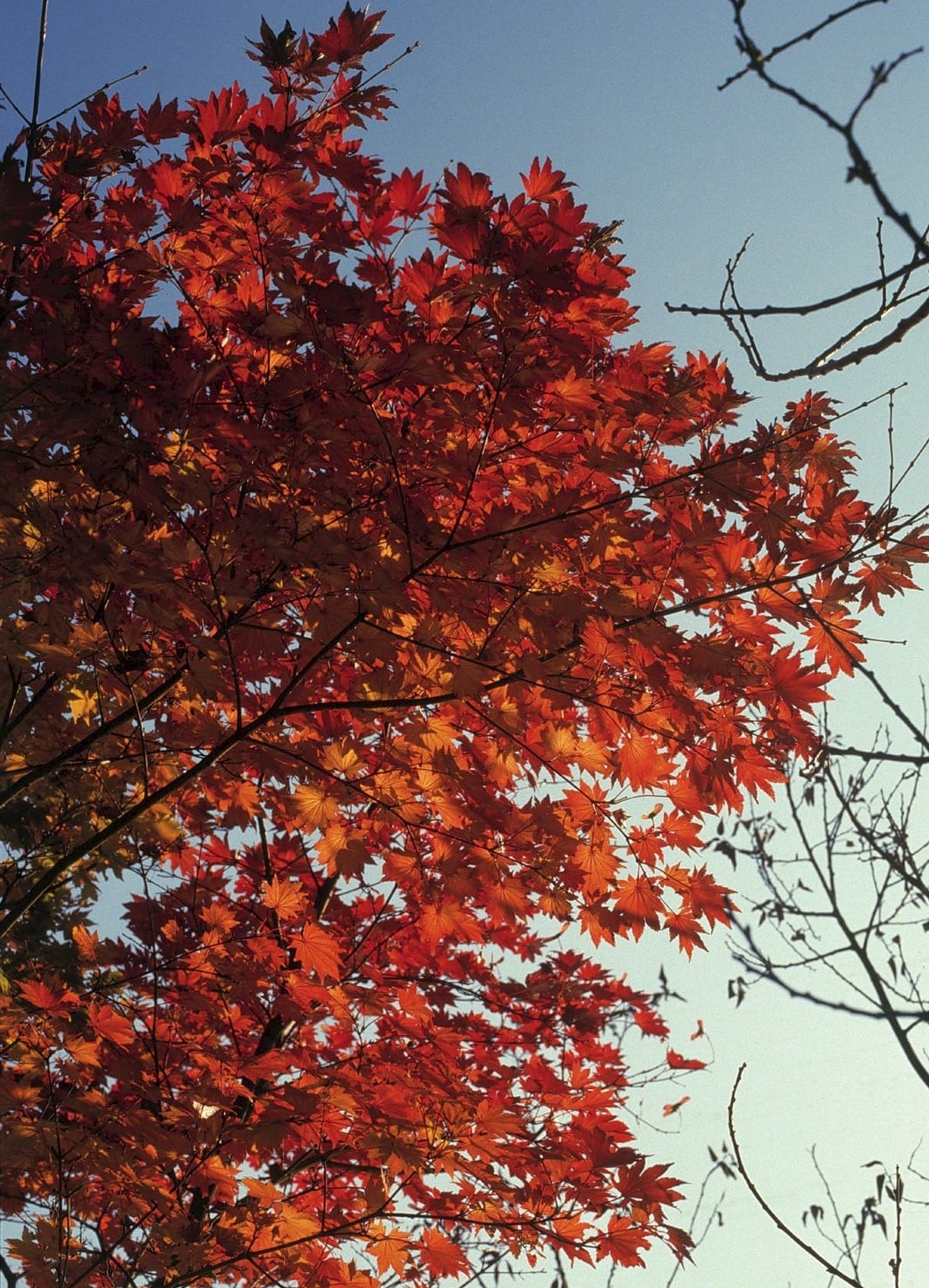Acer sieboldianum
Sponsor
Kindly sponsored by
a member of the International Dendrology Society
Credits
Article from New Trees by John Grimshaw & Ross Bayton
Recommended citation
'Acer sieboldianum' from the website Trees and Shrubs Online (treesandshrubsonline.
Genus
- Acer
- Sect. Palmata, Ser. Palmata
Common Names
- Siebold's Maple
Other taxa in genus
- Acer acuminatum
- Acer amplum
- Acer argutum
- Acer barbinerve
- Acer buergerianum
- Acer caesium
- Acer calcaratum
- Acer campbellii
- Acer campestre
- Acer 'Candy Stripe'
- Acer capillipes
- Acer cappadocicum
- Acer carpinifolium
- Acer 'Cascade'
- Acer caudatum
- Acer ceriferum
- Acer chapaense
- Acer chienii
- Acer circinatum
- Acer cissifolium
- Acer × conspicuum
- Acer cordatum
- Acer coriaceifolium
- Acer × coriaceum
- Acer crataegifolium
- Acer davidii
- Acer diabolicum
- Acer distylum
- Acer divergens
- Acer duplicatoserratum
- Acer elegantulum
- Acer erianthum
- Acer 'Esk Flamingo'
- Acer fargesii
- Acer fenzelianum
- Acer flabellatum
- Acer forrestii
- Acer franchetii
- Acer × freemanii
- Acer fulvescens
- Acer 'Gimborn'
- Acer ginnala
- Acer glabrum
- Acer 'Gold Coin'
- Acer granatense
- Acer grandidentatum
- Acer griseum
- Acer heldreichii
- Acer henryi
- Acer × hillieri
- Acer hookeri
- Acer hyrcanum
- Acer japonicum
- Acer kawakamii
- Acer komarovii
- Acer laevigatum
- Acer laurinum
- Acer laxiflorum
- Acer lobelii
- Acer longipes
- Acer macrophyllum
- Acer mandshuricum
- Acer maximowiczianum
- Acer maximowiczii
- Acer metcalfii
- Acer miaotaiense
- Acer micranthum
- Acer 'Mindavi'
- Acer 'Minorient'
- Acer miyabei
- Acer miyabei × campestre
- Acer monspessulanum
- Acer morifolium
- Acer 'Mozart'
- Acer oblongum
- Acer obtusifolium
- Acer okamotoanum
- Acer oliverianum
- Acer opalus
- Acer orientale
- Acer palmatum
- Acer papilio
- Acer pauciflorum
- Acer pectinatum
- Acer pensylvanicum
- Acer pentaphyllum
- Acer pentapotamicum
- Acer pictum
- Acer pilosum
- Acer pinnatinervium
- Acer platanoides
- Acer platanoides × amplum
- Acer platanoides × truncatum
- Acer × pseudoheldreichii
- Acer pseudoplatanus
- Acer pseudosieboldianum
- Acer pubinerve
- Acer pycnanthum
- Acer rubescens
- Acer rubrum
- Acer rufinerve
- Acer saccharinum
- Acer saccharum
- Acer sempervirens
- Acer 'Serpentine'
- Acer serrulatum
- Acer shenkanense
- Acer sikkimense
- Acer 'Silver Cardinal'
- Acer 'Silver Ghost'
- Acer sinense
- Acer sinopurpurascens
- Acer spicatum
- Acer stachyophyllum
- Acer taronense
- Acer tataricum
- Acer tegmentosum
- Acer tenellum
- Acer tetramerum
- Acer tibetense
- Acer tonkinense
- Acer triflorum
- Acer truncatum
- Acer tschonoskii
- Acer turkestanicum
- Acer tutcheri
- Acer ukurunduense
- Acer velutinum
- Acer wardii
- Acer 'White Tigress'
- Acer wilsonii
- Acer × zoeschense
Shrub or small tree, 8–10 m. Bark grey and smooth. Branchlets greenish brown, pubescent to tomentose, somewhat sticky when young. Leaves deciduous, papery, 5–7 × 6–9 cm, palmately lobed with (7–)9(–11) lobes, divided to half of the length, upper surface dark green, lower surface pale green with dense white hairs that persist along the veins, margins double-serrate, apex acuminate; petiole 3–6 cm long, pubescent; autumn colour coppery red. Inflorescence terminal, corymbose, 3–5 cm long with 15–20 flowers. Flowers 5-merous, staminate or hermaphrodite; sepals narrowly ovate, pale purple, petals ovate, greenish yellow, shorter than sepals, stamens eight, inserted inside the nectar disc. Samaras 1.5–2 cm long, greenish yellow, wings spreading at an angle of 130º–160º. Flowering April to June (Japan). Van Gelderen et al. 1994, van Gelderen & van Gelderen 1999. Distribution JAPAN: Honshu, Shikoku, Kyushu. Habitat Montane forest in southern Japan; in northern Japan, between 0 and 900 m asl. USDA Hardiness Zone 4–5. Conservation status Not evaluated. Illustration NT73, NT108. Cross-reference B206, K105.
Acer sieboldianum is anything but a ‘new tree’, but given its curious treatment in a very short paragraph by Bean (1976a), and minimal coverage elsewhere (for example, Hillier & Coombes 2002), a fuller account is desirable here. Introduced by Philipp von Siebold in the nineteenth century, it has remained overshadowed by its allies A. japonicum, A. palmatum and A. shirasawanum but is deserving of greater attention, not least for its exceptional and reliable autumn colour and much greater hardiness (although it can show some damage after a severe Polish winter: P. Banaszczak, pers. comm. 2007). According to van Gelderen et al. (1994) it flourishes in Scandinavia where A. palmatum is not hardy, and this would suggest a wide applicability in North America, where it is freely available. There are good specimens in many European collections, mostly making small trees of up to 10 m or so and, where there is room, forming wide-spreading rounded crowns, although sometimes the branches are more upright. The leaves are a fresh green in summer, with late shoots emerging bright red (L. Banks, pers. comm. 2006) before the tree becomes clad in superb autumn colour of scarlet and gold.

